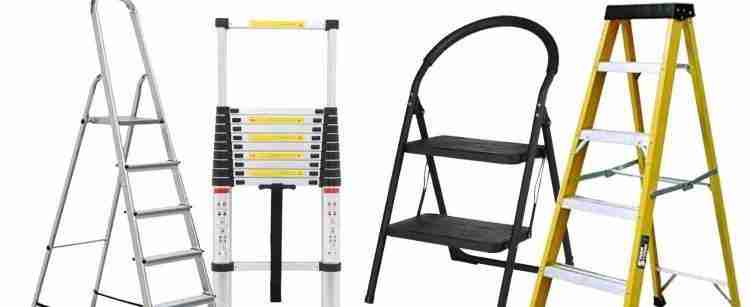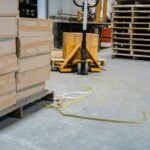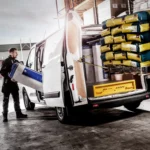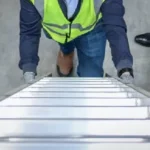What ladder do I need?
If you need to buy a ladder but not sure which type you need, then this article should help you be a little wiser with your choice. Maybe you aren’t even aware of all the different types that are available, honestly most people aren’t because there’s a wide variety and some very niche types. We will cover the most common ones in use these days and what they’re used for, in order to help you and your business choose the right ones for the job at hand.
There are of course some questions you should ask yourself first before you choose one, such as but not least the following:
- What types of tasks will it be used for?
- How high do I need to reach?
- Do I need a specific material for my ladder?
- What duration will I be needing to use the ladder for at any given time?
- How will it be transported and secured?

Once you have answered these questions, you will be able to use this article to inform you on your choice and guide you correctly. Choosing the right ladders not only makes the job easier but also helps your staff feel included and valued.
Types of ladders available
Small Step Stools & Kick Steps
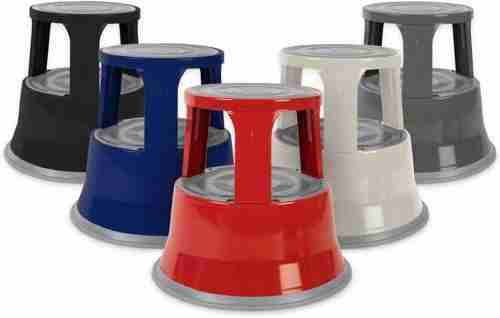
Step stools are referred to by a number of names, another of which is kick stools (depending on where you’re located in the UK). Step stools are usually one, two or three steps that are made from plastic, steel, wood or aluminium depending on the application.
They are designed for very fast tasks across many industries and workplaces, to reach items or objects that are just a little too high for safe manual handling out of your natural reach.
- Very Small and portable.
- Lightweight for manoeuvrability.
- Sturdy and sometimes with a wide footprint.
- Can be brightly coloured for extra visibility.
Platform Step Ladders & Swingbacks
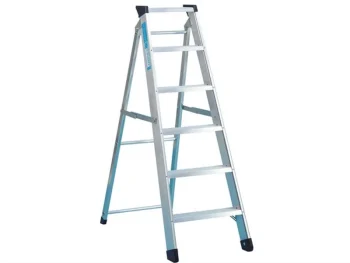
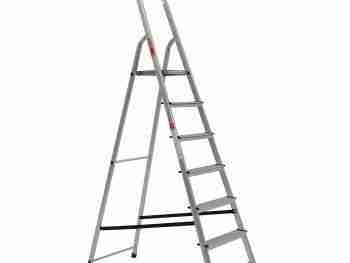
Platform ladders and the larger step ladders are fantastic for not only workplaces and industries, but also in the home for personal use. Platform ladders are pretty self explanatory by name, meaning they have a (usually) small platform at the top of the A frame to hold various items and equipment such as tools during tasks.
Ladders without the platform are usually used faster and more manoeuvrable, for tasks without much need for equipment.
- Perfect for the home as well as trade applications.
- Small enough in size to transport easily.
- Comes in various styles, such as double sided or heavy duty
Fibreglass Step Ladders
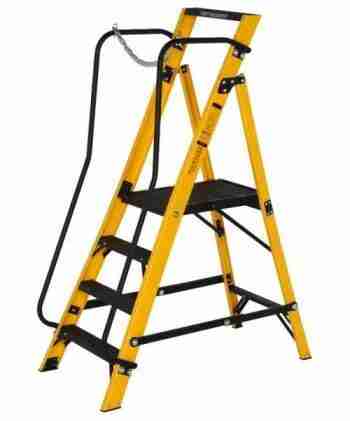
Fibreglass ladders are ladder of choice by electricians and those in the building industry. The reason for this becomes clear when we consider what they are made from. Traditional aluminium or steel ladders conduct both electricity and heat incredibly well making them unsuitable for working with electrics or in hot and cold environments. Fibreglass on the other hand is the perfect choice for these types of situations.
- Ideal for Thermal environments
- Perfect for electrical use situations
- Strong and sturdy
Extension Ladders
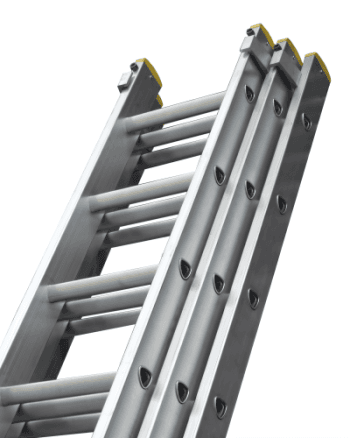
Extension ladders are the classic example we imagine in use if you think about the fire brigade. They are available in multiple sliding sections or extensions, usually in 2 or 3’s but sometimes more.
Extension ladders are always needed to be leaned against the working area to become sturdy, and usually need some ladder locking feature such as stabiliser or locking feet.
When using this type of ladder you should always plan at least one metre higher than your intended working position to ensure you don’t run out of room or steps.
- Perfect for working at large height ranges, up to and over 10 metres.
- Versatile with multiple extensions
- Sliding into a compact size
GRP Fibreglass Ladders
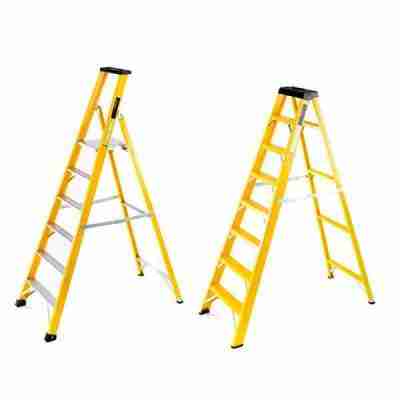
As we mentioned with the fibreglass step ladders, you can always purchase fibreglass variants of almost any other types of ladder. Again for electrical usage or thermal environments.
Telescopic Ladders
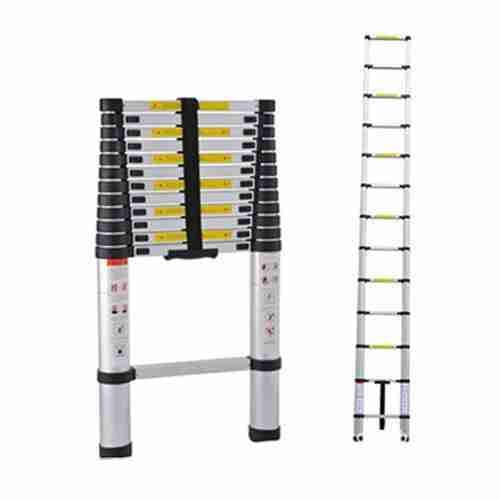
Telescopic ladders are becoming more popular in certain usage scenarios due to their ability to be super compact when not in use, but still providing a good amount of height reach to the user. They are perfect for situations such as tight building work, gaining access to lofts and smaller work areas where traditional type of ladders just don’t cut it.
- Ultra compactness
- Easy to store and transport in cars & vans
- Good height reach
Combination Ladders
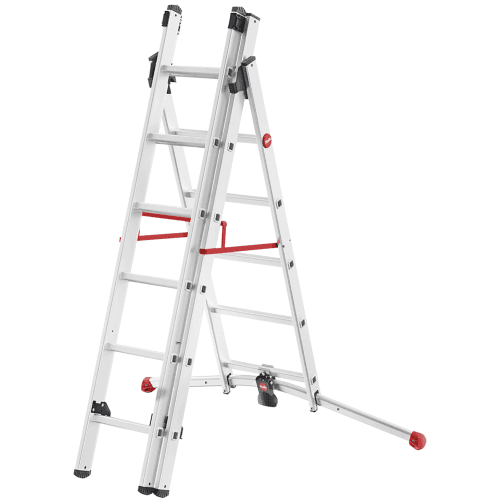
For tradesmen or workplaces where there is a large variety in the types of work needed, sometimes a combination ladder may be the right choice. These allow the usually ability to be used as a step ladder, but can also transform into different sizes, different size platforms, and certain shaped for unusual access needs.
These are a great all rounder to use in some workplaces rather than buying multiples of different types when just a combination would do.
- Versatile for almost any situation
- Can be stored efficiently
- Saves on cost due to its range of use
Warehouse Steps & Ladders

Warehouse steps or platform ladders are quite specific from the warehousing and manufacturing industries. They were designed and used for safe access and picking environments for longer periods of times. They usually come with safe guard rails on most sides, and castors on the bottom for easy of movement. They vary in height from just a metre or so, to over 6 metres and more. The platforms also vary from just a single person use, to multiple person use.
- Different industry standards than normal ladders.
- Specific in certain industries.
- Extremely safe to use, strong and sturdy.
- Usually colour coded for hi visibility.
Recap FAQ's
What materials are ladders made from?
Ladders are usually made from Wood, Plastic, Aluminium, Steel and Fibreglass.
How many types of ladders are there?
There is an incredible variety of ladders available, however the most common we see are; Stools, Step Ladders, Platform Ladders, Extension Ladders, Telescopic Ladders, Combination Ladders and Warehouse Steps.
What ladders should I use working with electrics?
You must do your own assessment for this need, but Fibreglass would usually be the best option due to their non conductive properties.
Is there specific warehousing ladders?
Yes, there are specific warehouse ladders, steps and platforms which are usually the best practice in those environments.
Which ladders are good to fit in a van?
Depending on the size of the van, telescopic, stool steps, step ladders and extension ladders can all fit reasonably well.
What ladders are best to reach very high places?
Extension ladders are usually the best option for this type of reach, however your own assessment must of course be done.
Further Reading
See our other knowledge base articles on the statistics and law, how to check their safety and how to use them correctly.


